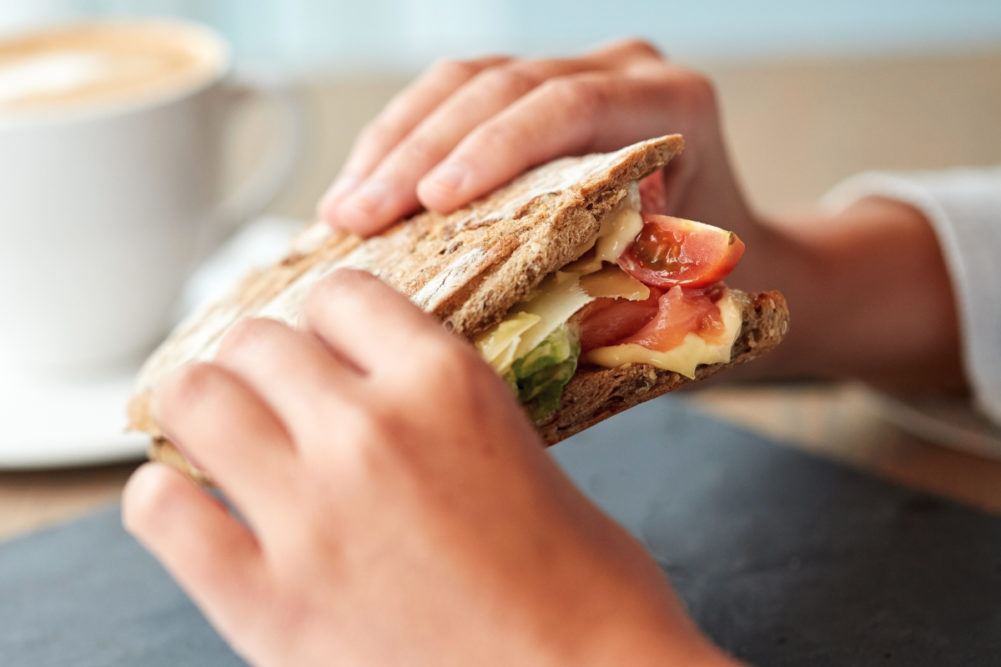WASHINGTON — That a large proportion of Americans consume grains at lower levels than recommended receives scant attention in the just released Dietary Guidelines for Americans 2020-25. A section in the report on grains highlights both the wide deficit in whole grains intake and the propensity for the public to consume grains in calorie dense forms, such as hamburgers or cookies.
Published every five years jointly by the US Department of Agriculture and the Department of Health and Human Services, the 164-page 2020-25 guidelines includes a brief section devoted to grains (comparable in length to passages in the 2015-20 guidelines).
“Most Americans meet recommendations for total grain intakes, although 98% fall below recommendations for whole grains and 74% exceed limits for refined grains,” the guidelines say.
Left unsaid in the narrative but depicted in a chart is that more than 40% of the US population consumes total grains at levels below dietary guideline recommendations (see chart below).

The graphic shows more than 90% of the population meeting recommended consumption guidance for refined grains and more than 95% of the population falling short of whole grains intake.
Much of the grains narrative in the Dietary Guidelines describes the forms in which grains are consumed and recommendations for change.
“Almost half of all intake of refined grains is from mixed dishes, such as sandwiches, burgers, tacos, pizza, macaroni and cheese, and spaghetti with meatballs,” the Dietary Guidelines says. “About 20% of intake of refined grains comes from snacks and sweets, including crackers, pretzels, cakes, cookies, and other grain desserts. The remaining refined grains are generally eaten as separate food items, such as pancakes, cereals, breads, tortillas, pasta, or rice. About 60% of whole grain intake in the United States is from individual food items, mostly cereals and crackers, rather than mixed dishes. Grains are generally consumed in forms with higher amounts of sodium (e.g., breads, tortillas, crackers) and added sugars (e.g., grain-based desserts, many ready-to-eat breakfast cereals) rather than the nutrient-dense forms. Further, grains are often consumed as part of mixed dishes, such as pasta dishes, casseroles, and sandwiches that may have other ingredients that are not in nutrient-dense forms.
“Shifting from refined to whole grain versions of commonly consumed foods — such as from white to 100% whole wheat breads, and white to brown rice where culturally appropriate — would increase whole-grain intakes and lower refined grain intakes to help meet recommendations. Additionally, shifting to more nutrient-dense forms of grains, such as ready-to-eat breakfast cereals with less sugar, will help meet healthy dietary patterns.”
That sandwiches may be a source of unhealthy eating is an implicit criticism recurrent through the Dietary Guidelines.
For instance, in a discussion of vegetables, the Dietary Guidelines reads, “Many vegetables are consumed as part of mixed dishes like sandwiches, pasta with a tomato-based sauce, or casseroles that may have other ingredients that are sources of saturated fat and/or sodium.”
More explicitly, the Dietary Guidelines say the main sources of saturated fat in the US diet include numerous grain-based foods — sandwiches, burgers, tacos, burritos, desserts, sweet snacks, rice, past and other grain-based mixed dishes.
A graphic shows sandwiches and desserts/sweet snacks as the top contributor of saturated fat in the diet. Similarly, sandwiches rank first as the source of sodium in the diet.




